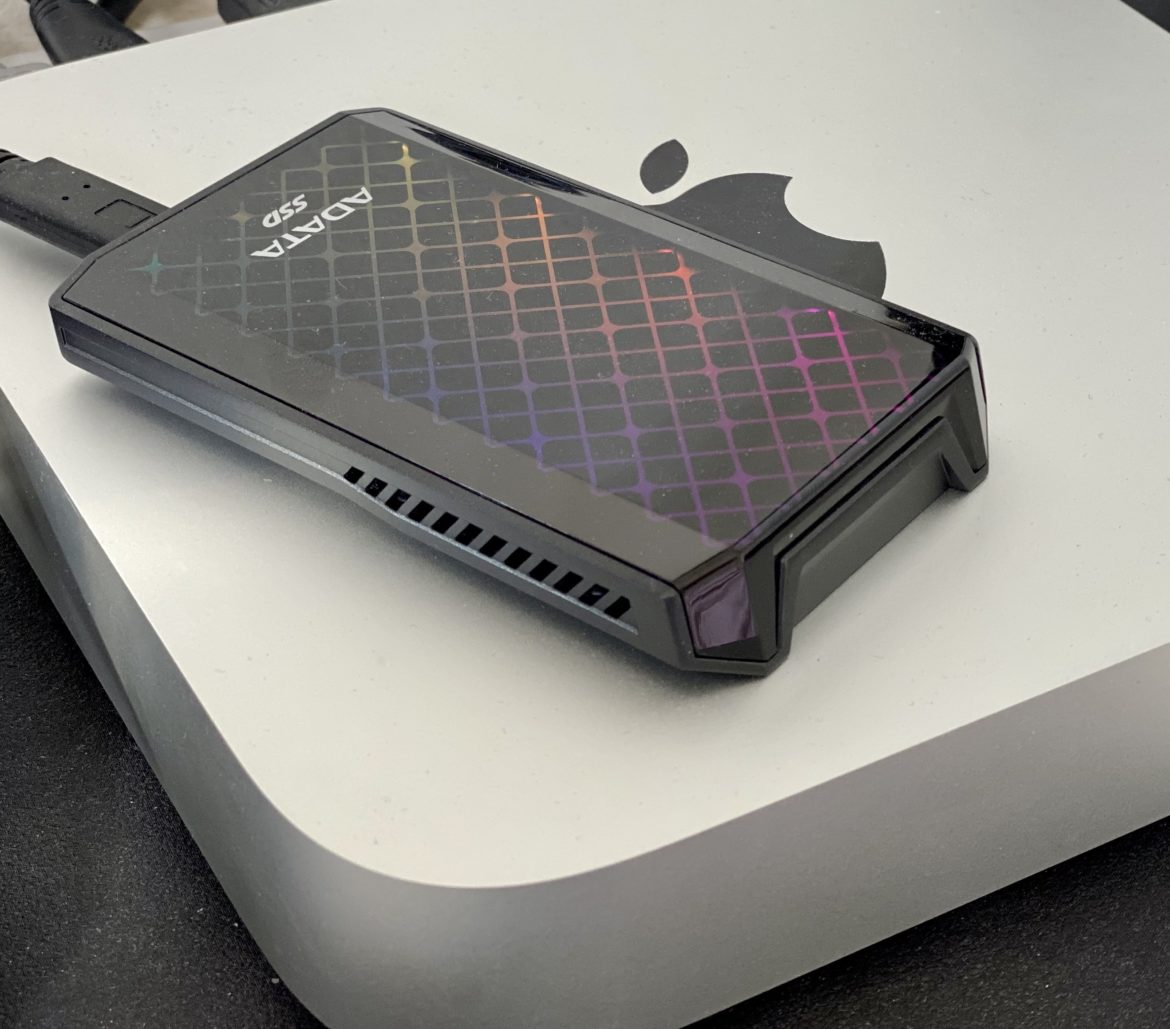TL;DR
Sony's PS5 update allows for internal SSD expansion, opening doors to more affordable storage. While Xbox has a pricier Seagate option, the ADATA SE900G is a high-performance external SSD promising blazing speeds. However, its full potential is capped by console USB limitations, offering only half its theoretical speed on PS5 and even less on Xbox. Though it significantly speeds up game loading times on consoles, PC users with compatible hardware stand to gain the most. Is the SE900G worth the premium, or are there better console storage solutions? Dive into our full review to find out!
With the recent release of Sony’s PS5 beta software update, support for NvmE (m.2) SSDs allows users to expand the console’s internal storage capacity. While Xbox offers a straightforward external solution from Seagate, the cost of approximately 2,500 SEK per terabyte can be prohibitive. PS5 owners, however, stand to benefit from a wider selection of more affordable m.2 SSDs that meet the console’s specifications and requirements in the near future.
Currently, a more economical (though potentially slower) alternative for both PS5 and Xbox Series X/S is a high-performance external SSD. The ADATA SE900G boasts impressive specifications: a TCL-type NAND with 1TB (up to 2GB) capacity, PCI Express 3.0 x4 interface, and USB-C 3.2 gen 2×2 connectivity. This “true” USB-C 3.2 configuration theoretically enables speeds of up to 20Gbp/s (maximum 2.5GB/s), positioning the SSD among the fastest on the market. Priced at approximately 1,800 SEK, it is also one of the more premium external 1TB SSDs available. The critical question is whether its real-world performance justifies the cost. We put it to the test to find out.
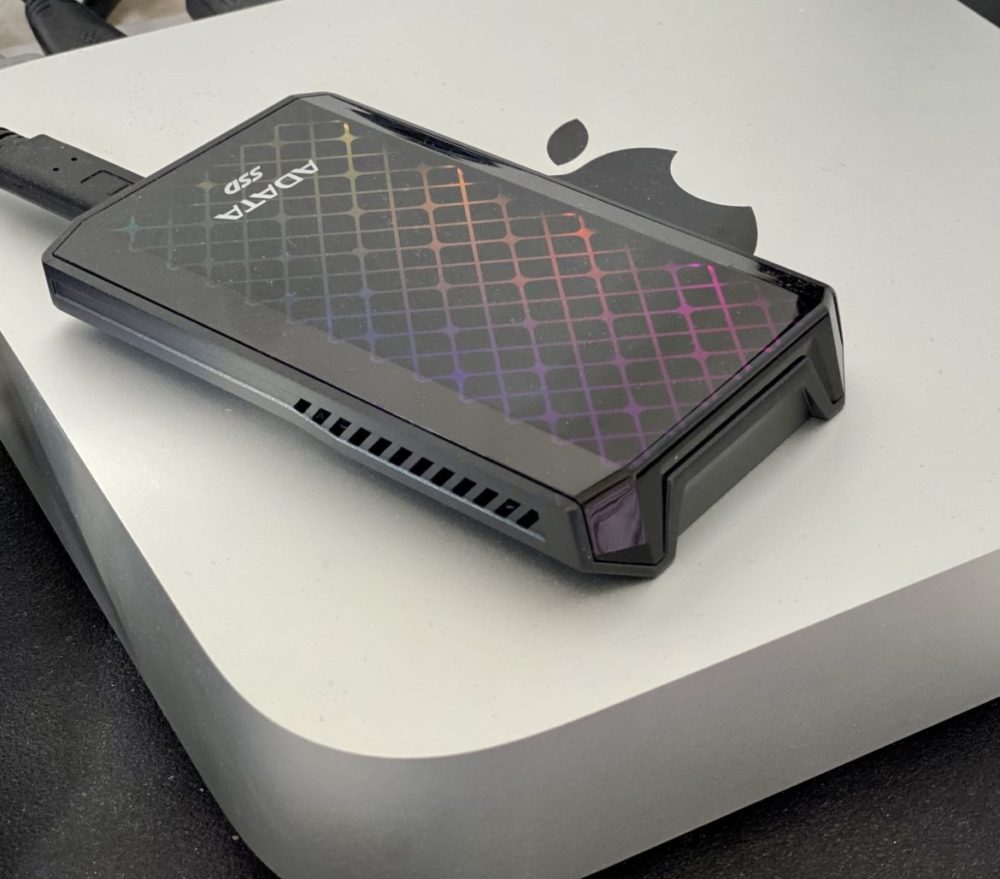
The ADATA SE900G features a stylish plastic enclosure with integrated cooling and RGB lighting. The lighting effect is subtle, but it is permanently enabled, which may be a consideration if you are sensitive to light in your workspace or bedroom. The drive weighs approximately 160 grams and measures 111 x 66 mm with a height of around 17 mm. Its slim design and substantial feel differentiate it from the lighter ADATA SE800.
USB 3.2 gen 2×2 is a complex topic, as the USB standard is notoriously intricate. To achieve maximum speeds, your hardware must support 3.2 gen 2×2. The Xbox Series X and PS5 do not offer this support, a limitation inherent to the current generation of consoles (likely due to cost considerations). PS5 users are capped at 10 Gbit/s, regardless of whether the front USB-C port or the rear USB-A ports are used. The SE900G package includes both USB-C-to-USB-C and USB-C-to-USB-A cables for connectivity. A 10Gbp/s connection translates to a theoretical maximum speed of 1,250 MB/s (1.25 GB/s), which is sufficient for most applications but only about half of the drive’s rated 2,500 MB/s. The situation is further constrained for Xbox owners, as those consoles (including Xbox One) are limited to USB 3.0, creating a bottleneck at 4.8 Gbit/s (600 MB/s).
To evaluate the drive’s performance, we utilized a Mac Mini M1 equipped with Thunderbolt / USB-C 4 ports (theoretical maximum 40 Gbps) and ran Black Magic Disk Speed test and AmorphousDiskMark:
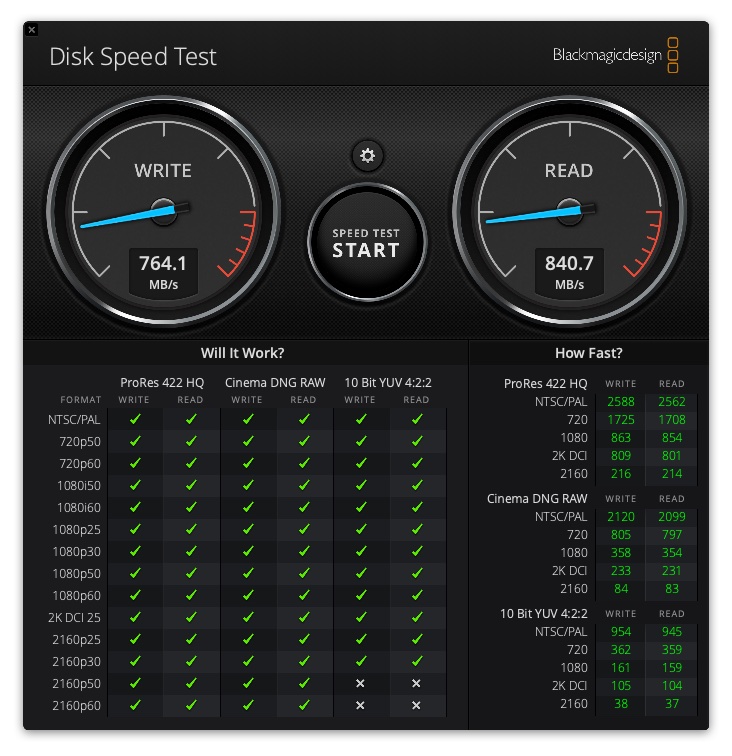
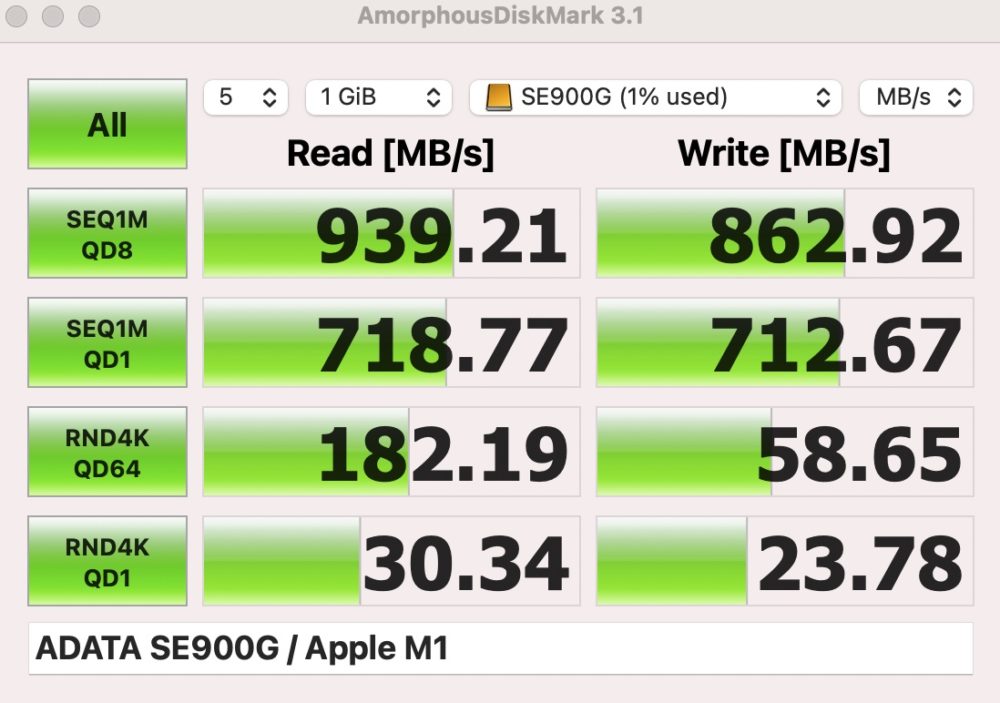
The ADATA SE900G demonstrated strong performance, but speeds fell short of its theoretical maximum, achieving roughly half of the advertised rate. It’s important to note that the USB standard is complex, and while USB 4 is designed to be backwards compatible with USB 3.2 gen 2 and earlier, variations in chipsets can impose limitations (USB 4 should support at least 20Gbps according to Thunderbolt 3 specifications). Consequently, users may reasonably expect full speed from a device that supports USB 4, which was not the case in our testing. While higher speeds might be attainable with other USB 3.2 gen 2×2 controllers on PCs (as reported in some tests), our evaluation is based on our own measurements. We plan to update this review with PC-based testing in the future. However, the key takeaway is that performance claims for external drives based on USB specifications should be verified through independent testing.
Testing on consoles yielded results consistent with previous experiences, such as with the Kingston KC2500. The drive functions effectively as external storage for last-generation games, but the consoles’ port limitations render its full potential unrealized. Game load times for titles like Final Fantasy XV, Shadow of the Tomb Raider, and Fallout 4 were reduced from approximately one minute to between 10-20 seconds, which represents a significant improvement.
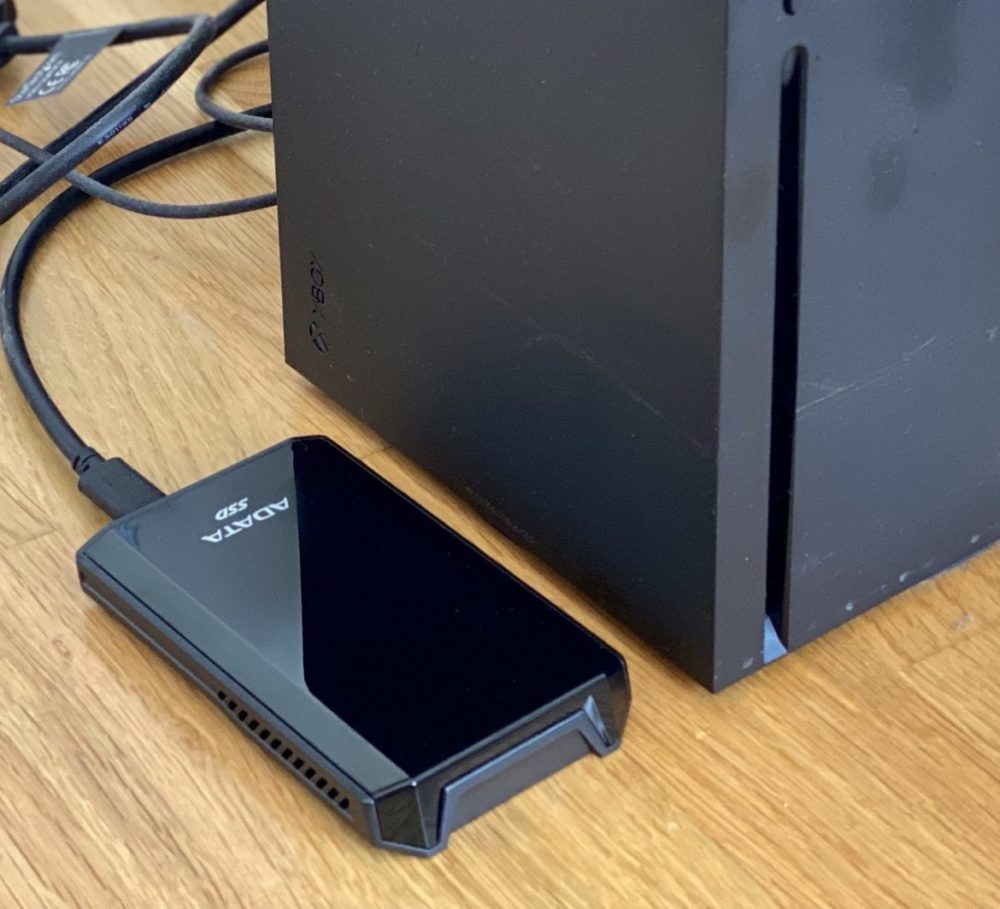
Summary ADATA SE900G
The ADATA SE900G is an ambitious product that, in the appropriate context, ranks among the fastest external SSDs currently available. While it performs adequately as external storage for PS5 and Xbox Series consoles, its performance capabilities are significantly underutilized. Users can potentially save money by opting for a less powerful drive that still saturates the consoles’ bandwidth limitations, especially on Xbox. PC users, particularly gamers who handle large game files, stand to gain the most from the SE900G. With compatible hardware, the SE900G can achieve speeds of around 2,000 MB/s, representing a compelling value proposition. However, our testing did not reach this level, even with modern Mac hardware, underscoring the challenges in predicting real-world performance. This limitation is not a fault of the ADATA product itself but rather a consequence of the complexities inherent in the USB standard.
As a result, the product’s performance is subject to variables that are not always predictable. While the SE900G is a capable choice, particularly in anticipation of future hardware upgrades, users may risk overpaying for performance that cannot be fully realized with their current setup. We recommend the SE900G primarily for PC gamers who possess or plan to upgrade to the latest hardware. For Mac and console users, the drive functions well, but more cost-effective alternatives offer comparable real-world performance.
